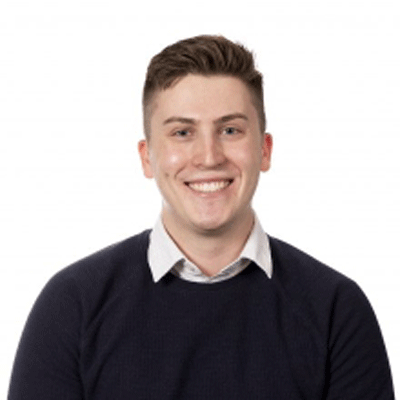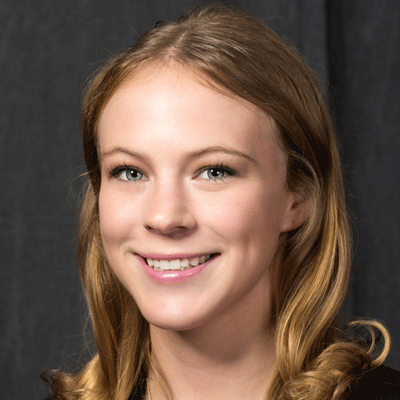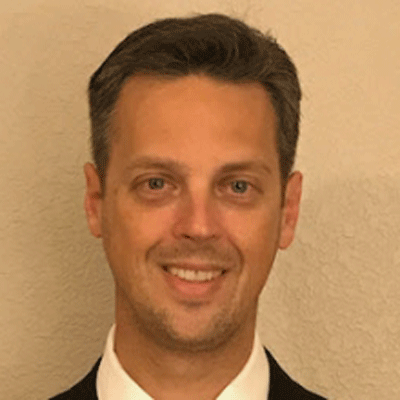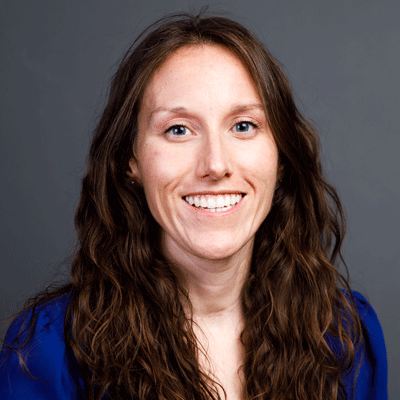Scholarship supports innovative Arizona student researchers
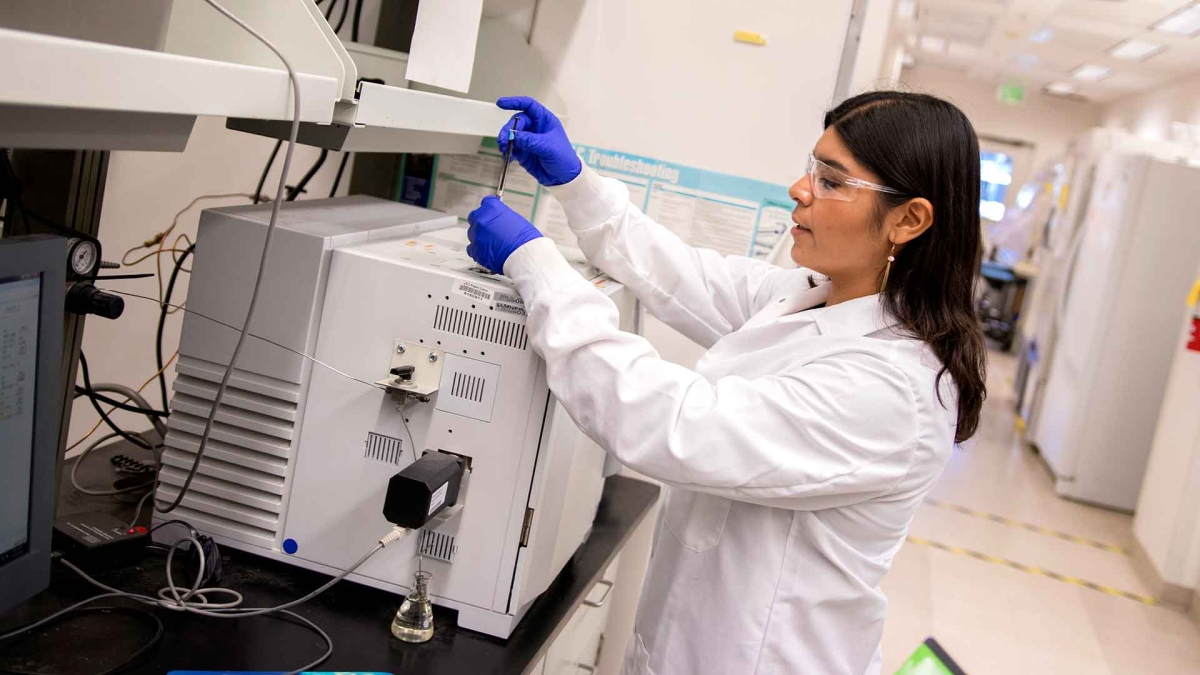
Aide Robles, a 2022 ARCS Scholar, is working to develop user-inspired technology for bioremediation, the process of decontaminating a polluted site by introducing microorganisms. The ARCS Foundation gives young innovators opportunities to pursue solutions to medical challenges. Photo by Marco-Alexis Chaira/ASU
To keep up with the competitive global market and complex 21st-century issues, American engineers need as much support as possible to overcome the challenges they face.
The Achievement Rewards for College Scientists, or ARCS, Foundation understands the next generation of scholars must receive proper support to advance science and technology in the United States. The foundation accomplishes this by providing financial awards to academically outstanding students in science, engineering and medical research.
This year, a record 21 Arizona State University students have been named ARCS Scholars, 13 of whom are pursuing degrees in ASU’s Ira A. Fulton Schools of Engineering.
Since 1975, the Phoenix Chapter of ARCS has provided more than $6.6 million in support to 1,052 graduate students attending Arizona state schools. Recipients receive $8,500 administered by the ASU Graduate College, which can be used for whatever students need to support their research.
This year’s scholars are conducting research in a wide range of fields, including clean water access, data science, cybersecurity, brain health and evaluating disease risk. Each of these students has different individual goals and obstacles to overcome, and the ARCS Scholarship is helping them rise to the challenge.
Great expectations
“I was raised on the poverty line by immigrant parents from vulnerable rural communities without access to clean water, plumbing and education,” Aide Robles says. “I grew up listening to stories of their struggles, and my family’s hardships became the largest driver of my choice to pursue an undergraduate degree in civil engineering with a focus on hydrology. I was motivated to ensure all people have access to clean water.”
After graduating from Northern Arizona University with a double major in Spanish and civil engineering, Robles chose to pursue master's and doctoral degrees in environmental engineering at ASU after meeting her academic advisor, Anca G. Delgado, an assistant professor of civil and environmental engineering in the School of Sustainable Engineering and the Built Environment, part of the Fulton Schools, and a researcher in the Swette Center for Environmental Biotechnology in ASU’s Biodesign Institute.
Robles is using the ARCS Scholarship to support her work on user-inspired technology for bioremediation, the process of decontaminating a polluted site by introducing microorganisms. Her research focuses on the bioremediation of chlorinated contaminants in groundwater and soil.
By developing and optimizing a novel bioremediation technology that employs the metabolic process called chain elongation, Robles will support both industry and government entities to eliminate toxic contaminants from groundwater and the soil subsurface.
Sharing machine learning knowledge
Tyler Sypherd, electrical engineering student.
After earning his undergraduate degree in electrical engineering at ASU, Sypherd became interested in exploring the fundamental limits of data and learning.
“I was motivated to pursue a PhD in electrical engineering at ASU to learn to model the most efficient compression and communication system that we know of: the human brain,” Sypherd says. “My research is in the field of machine learning, where the goal is to imbue algorithms with intelligence and the ability to learn from data.”
Sypherd has made extensive use of ASU’s research computing resources in this pursuit. His aim is to improve the robustness of machine learning algorithms for a wide range of classification problems with realizable practical utility. The results he has obtained so far suggest that the metrics these algorithms use would be more effective if they employ metrics from the field of information theory.
Sypherd hopes his research will provide data scientists and machine learning engineers a new tool to shape the learning process for machine learning algorithms.
User-friendly cybersecurity
Danielle Jacobs, computer science student.
Danielle Jacobs is using her ARCS Scholarship to subsidize the time she spends developing a user-friendly tool to assess a consumer’s risk of cyber harm.
As the number of smart devices in our lives increases, from smart cars to smart fridges, it becomes increasingly difficult for the average person to manage their cyber security. Before returning to school to pursue a doctoral degree in computer science in the School of Computing and Augmented Intelligence, Jacobs worked in the cybersecurity field and noticed just how many resources industries dedicate to their own protection in cyberspace.
“I realized that in the industry, they’ve got entire teams and a structured method to know what their risk is and how to mitigate it,” Jacobs says. “If average consumers try to research it themselves, there’s so much information out there that it’s hard to make heads or tails of it and figure out what they need to do. So one of the things I’m trying to do in my research is develop a composite index.”
This composite index will come in the form of a survey, quizzing users about their usage of smart devices and evaluating potential risk areas. Results will evaluate the level of these risks and share ways the consumers can protect themselves.
Leveraging connections
Jeffrey Blanzy, biomedical engineering
Jeffrey Blanzy, a biomedical engineering graduate student in the School of Biological and Health Systems Engineering, cites the connections he has made to the Barrow Neurological Institute, or BNI, as the most influential element of his work as an ARCS Scholar, although the financial support has also been critical to advancing his research.
The ARCS Foundation maintains a relationship with researchers at the BNI, which enabled Blanzy to meet neurosurgeon Robert Spetzler.
“Early in my engineering career, a colleague of mine lost his wife to a ruptured neurovascular aneurysm. That memory was very impactful and personalized my research,” Blanzy says. “Additionally, I am inspired by the research of Dr. Spetzler at Barrow (Neurological) Institute. In particular, his work with skull-based tumors.”
Blanzy’s research focuses on the synthesis of temperature-responsive hydrogels for the treatment of brain aneurysms. Although it is outside the scope of his current research, he also believes this gel can be used to release chemotherapy drugs directly into a tumor, minimizing the risk of open brain surgery.
“While we are far away from clinical trials,” Blanzy says, “only through the support of ASU, BNI and ARCS could we have developed this unique biomaterial and understand its use and application for treatments of aneurysms and arteriovenous malformations in the brain.”
Transdisciplinary approach to research
Melanie Newell, biological design student.
Melanie Newell is using her ARCS Scholarship to fund larger grant proposals for what she hopes will be trailblazing research in epigenetics, the study of how behavior and environment can affect the way genes express themselves.
Newell was drawn to ASU’s biological design doctoral program because of its transdisciplinary methodology, which has allowed her to merge her interests in epigenetics and conservation biology, the subject of her undergraduate degree. She chose to return to school after spending 10 years teaching STEM subjects at schools in Phoenix to pursue her growing interest in scholarly research.
Newell discovered the ideal convergence of her interests after meeting with Rolf Halden, director of the Center for Environmental Health Engineering in ASU’s Biodesign Institute and a professor of civil and environmental engineering in the Ira A. Fulton School of Sustainable Engineering and the Built Environment, part of the Fulton Schools.
The goal of Newell’s research is to take population data derived from wastewater analysis and investigate the epigenetic changes in a group of people to verify whether they are at risk for certain diseases. She is particularly interested in neurodegenerative disorders like Lou Gehrig, Alzheimer’s and Parkinson’s diseases. This analysis could lead to early diagnoses for those at risk.
“This type of analysis has never been done,” Newell says. “Epigenetics has always been done with individuals. It’s always been done with very purified, carefully cultured samples from people.”
With the help of her advisors, Newell is eager to set a new standard for epigenetic research.
Meet the 2022 ASU Fulton Schools ARCS Scholars
Thirteen of the 21 ARCS scholars are students in the Fulton Schools. See the full list of ASU ARCS scholars on the ASU Graduate College website.
- Edward Andert – computer engineering, School of Computing and Augmented Intelligence.
- Jeffrey Blanzy – biomedical engineering, School of Biological and Health Systems Engineering.
- Emily Briese – civil, environmental and sustainable engineering, School of Sustainable Engineering and the Built Environment.
- Danielle Jacobs – computer science, School of Computing and Augmented Intelligence.
- Tyler McCarthy – electrical engineering, School of Electrical, Computer and Energy Engineering.
- Allison McMinn – electrical engineering, School of Electrical, Computer and Energy Engineering.
- Melanie Newell – biological design, School for Engineering of Matter, Transport and Energy.
- William Parquette – electrical engineering, School of Electrical, Computer and Energy Engineering.
- Sydney Parrish – chemical engineering, School for Engineering of Matter, Transport and Energy.
- David Quispe – materials science and engineering, School for Engineering of Matter, Transport and Energy.
- Aide Robles – civil, environmental and sustainable engineering, School of Sustainable Engineering and the Built Environment.
- Tyler Sypherd – electrical engineering, School of Electrical, Computer and Energy Engineering.
- Elisabeth Thomas – chemical engineering, School for Engineering of Matter, Transport and Energy.
More Science and technology

ASU postdoctoral researcher leads initiative to support graduate student mental health
Olivia Davis had firsthand experience with anxiety and OCD before she entered grad school. Then, during the pandemic and as a…

ASU graduate student researching interplay between family dynamics, ADHD
The symptoms of attention deficit hyperactivity disorder (ADHD) — which include daydreaming, making careless mistakes or taking…

Will this antibiotic work? ASU scientists develop rapid bacterial tests
Bacteria multiply at an astonishing rate, sometimes doubling in number in under four minutes. Imagine a doctor faced with a…
